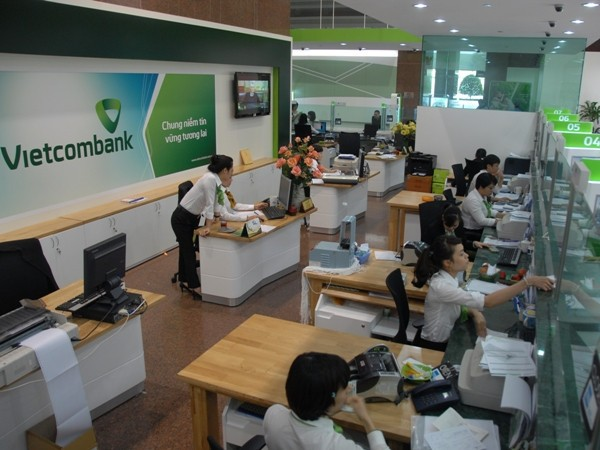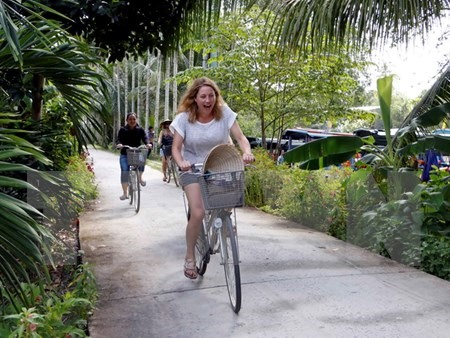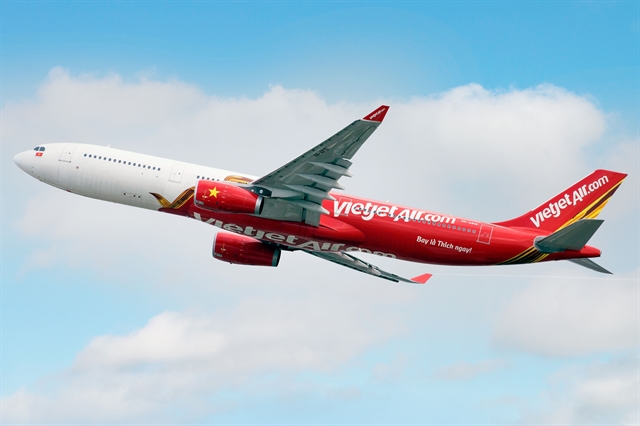 Life & Style
Life & Style

" />Effective management of social networks and promotion of digital marketing are both essential to fully tap the potential of online tourism in Việt Nam, experts have said.
 |
| Foreign tourists visit Mỹ Sơn Sanctuary, a world heritage site, located in Duy Xuyên District of central Quảng Nam Province.—VNA/VNS Photo Đoàn Hữu Trung |
HCM CITY — Effective management of social networks and promotion of digital marketing are both essential to fully tap the potential of online tourism in Việt Nam, experts have said.
Innovative tourism models and increased competitiveness would also help travel firms realise opportunities in the tourism sector, they said.
Asia is a fast-growing region in e-commerce development, Phạm Thành Công, senior manager of Retailer Vertical at Nielsen Vietnam.
The service industry has had strong growth in the last five to seven years, Công said at a meeting celebrating Online Tourism Day held yesterday (July 5) in HCM City.
Digitally connected spenders are a fast-growing new segment of consumers, as they have discretionary income and are avid shoppers who punch above their income class in spending.
There are currently 23 million digitally connected spenders in Việt Nam and the number is expected to jump to 40 million by 2025.
By 2025, connected spenders’ annual spending is expected to rise to US$99 billion from the current $50 billion.
Connected spenders provide business with a new approach to capturing market share, replacing traditional income-focused metrics that cater to a generic middle class.
Connected spenders also tend to be younger, confident city dwellers.
Nearly 50 per cent of Vietnamese consumers spend their spare cash on holidays, he said.
Respondents in the online study say they had purchased fashion products (64 per cent), travel products and services (47 per cent), and books, music or stationery (51 per cent).
Tú Lê, industry head of travel and retail at Google Asia Pacific, said the mobile share of OTA (online travel agents) bookings was on the rise across the Asia-Pacific region where most of the growth in tourists to Việt Nam originates.
Smartphone adoption in Việt Nam has reached 72 per cent of the population and is the same as in the US, but a higher proportion of mobile travelers in Việt Nam use smartphones to search for travel-related products and services, according to Google’s Consumer Barometer in 2016.
Forty-eight per cent of Vietnamese smartphone users search for hotel destinations compared to 18 per cent in the US.
The rates for ground travel and flights in Việt Nam were 42 per cent and 37 per cent, respectively, compared to 25 per cent and 18 per cent in the US.
According to the World Tourism Organisation, Asia Pacific has seen unprecedented growth in tourism, far above the world average, with technological revolution and the influence of the social media being the major factors in the growth.
The rise of the free and independent travelers who use online travel agents instead of traditional package tour operators has changed the marketplace, it said.
The Southeast Asian online travel market is forecast to jump to US$90 billion by 2025 from $22 billion in 2015, according to a study by Google.
Ngô Minh Đức, chairman of Gotadi.com, a local OTA, said that local OTAs were facing fierce competition with foreign-based OTAs who have advantages of innovative technologies and well-established brands and have been familiar with the online market for many years.
Established in 2014, the company is partnering with three domestic airlines and works with 50 airlines with flights to Việt Nam as well as 900 airlines around the world and 400,000 hotels.
The company is upgrading its platform to create new experience for customers, he said.
In June, the National Assembly approved amendments to the Law on Tourism in an effort to create favorable legal conditions for tourism development in the future, said Vũ Quốc Trí, chief of office at the Việt Nam Administration of Tourism.
In early 2017, the Politburo issued Resolution No. 08-NQ/TW with an aim to develop tourism into a spearhead economic industry by 2020.
The Tourism adminstration office has proposed to the Government several solutions to achieve a tourism growth rate of 30 per cent this year, including expanding promotion and marketing programmes and increasing the number of countries which enjoy the e-visa programme.
These two major solutions are related to the application of information technology and communication.
In the first half of the year, the number of foreign tourists visiting Việt Nam reached 6.2 million, a year-on-year increase of 30 per cent. — VNS
 |
| Foreign tourists cycle during their homestay in the Cửu Long (Mekong) Delta province of Cần Thơ.- VNA/VNS Photo Thanh Liêm |




